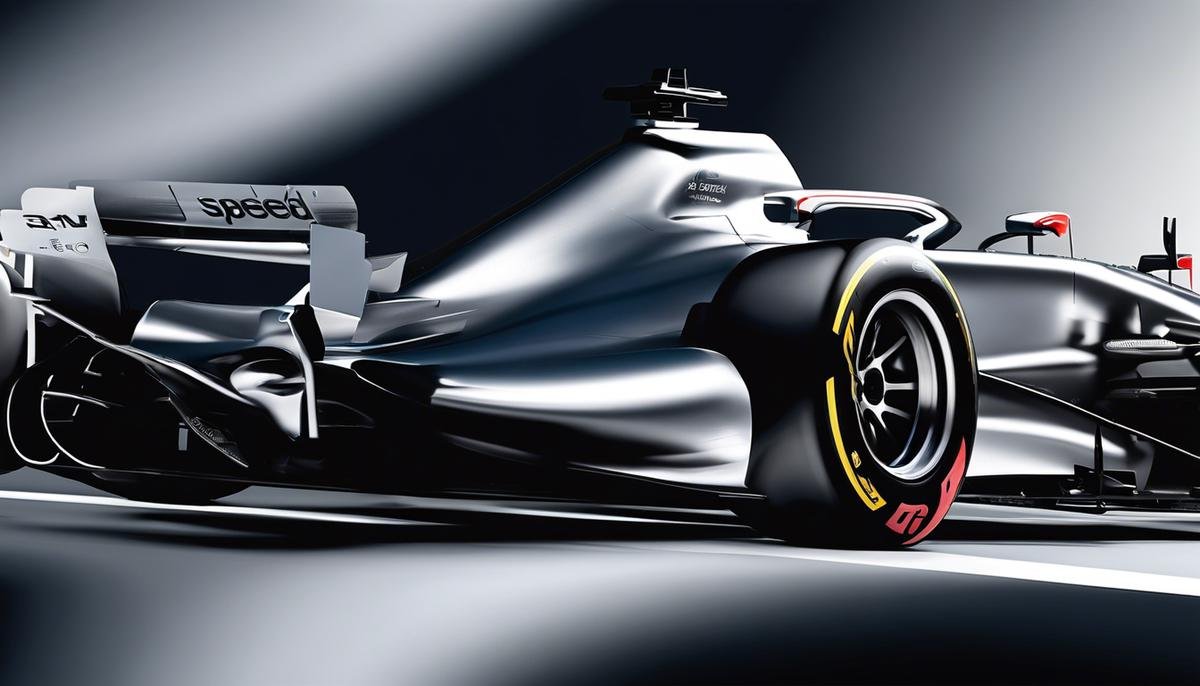
The exhilarating pace of a Formula 1 car is the quintessential blend of art and science, a testament to human ingenuity where engineering marvels meet the raw edge of speed. Considered the pinnacle of automotive technology, F1 cars are breathtaking symphonies of aerodynamics, cutting-edge engine technology, and pioneering materials that dance on the racetrack. As we delve into the heart of what propels these vehicles to awe-inspiring velocities, we uncover the relentless pursuit of perfection that defines Formula 1. This essay seeks to explore the intricate machinery and the relentless innovation that push these cars to the limits of their capabilities, painting a vivid picture of speed that strikes a fine balance between power and control.
Engineering Behind F1 Speed
The High-Octane Tech Propelling F1 Cars to Blistering Speeds
In the adrenaline-fueled world of Formula 1 racing, technology is the undisputed king of the track. It's not just about raw power; it's the fusion of advanced engineering and cutting-edge tech that propels these high-performance machines to eye-watering speeds. Let's shift gears and delve into the tech that drives F1 cars to their limits.
Aerodynamics: The Art of Airflow
Aerodynamics cannot be overstated in its importance to F1. Teams invest heavily in wind tunnel testing and computational fluid dynamics (CFD) to sculpt bodywork that cuts through air like a knife through butter while maximizing downforce. Innovations like 'the DRS (Drag Reduction System)', which adjusts the rear wing's angle to reduce drag, embody the relentless pursuit of aerodynamic perfection.
Power Units: Hybrid Energy Mastery
The F1 power unit is a marvel of efficiency, extracting every joule of energy from its 1.6-liter V6 turbocharged engine. But it's the seamless integration with the Energy Recovery Systems (ERS) that really sets it apart. The ERS harvests energy from braking and the turbocharger's heat, unleashing additional horsepower when needed while enhancing fuel efficiency, a master class in sustainable high-performance engineering.
Tire Technology: The Quest for Grip
Rubber meets the road, literally, with F1's tire technology. Tire compounds are meticulously chosen to match the track's characteristics, temperature, and racing conditions. With the right compound, tires bite into the asphalt, providing the traction necessary for the daring maneuvers seen on race day. This isn't off-the-rack rubber; it's bespoke engineering for grip.
Data Analytics: Predictive Performance
In F1, data is the new horsepower. Telemetry systems stream gigabytes of data, from tire pressure to brake temperatures, back to the pit wall. Engineers and data analysts work in concert, using this real-time data to make strategic decisions and optimize car performance. In a sport decided by milliseconds, data analytics is the silent powerhouse.
Materials: The Strength-to-Weight Champions
Carbon fiber reigns supreme in the F1 construction playbook. Its superior strength-to-weight ratio makes it the go-to material for many car components, offering both safety and speed. From the monocoque to steering wheels, carbon fiber's high tensile strength and light weight help shave off crucial kilos, contributing to the car’s lightning pace.
Suspension: Precision Handling
As critical as speed is, without control, it's nothing. F1 suspension systems are finely tuned for each circuit, absorbing every bump and providing stability at high G-forces. The use of inboard suspension, with components like pushrods and pullrods, helps maintain the car's low center of gravity, essential for precise handling at top speeds.
To sum up, F1 cars' blend of aerodynamics, hybrid engine technology, tailor-made tires, detailed data analytics, lightweight materials, and advanced suspension stands as a testament to what's achievable when technology meets tenacity. Each Grand Prix weekend is a showcase of continual innovation – a microcosm of the blistering pace of technological advancement that defines our era. On the track, this translates to lightning-fast cars capable of pushing the very boundaries of speed and efficiency.
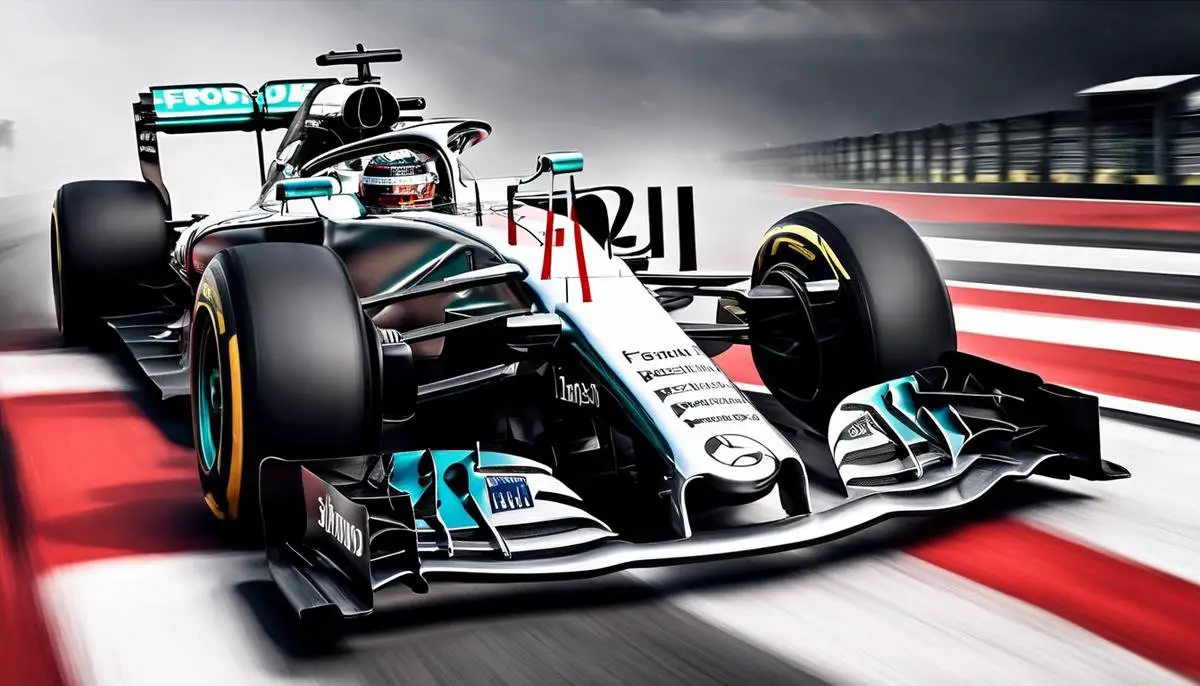
F1 Speed Comparison
Formula 1 vs. Other Racing Titans: A Clash of Speed and Technology
When it comes to motorsport, Formula 1 (F1) sits at the pinnacle, but how does it truly compare to other racing classes such as IndyCar, NASCAR, and WEC (World Endurance Championship)? It's crucial to understand the varying technological advancements and regulations that distinguish F1 as a premier racing class.
Starting with chassis design, F1 cars are engineered for maximum downforce, utilizing cutting-edge materials and sophisticated aerodynamic concepts. This aspect is crucial as it allows F1 cars to maintain high speeds in corners, a feature that significantly outmatches other classes. In contrast, NASCAR vehicles, built for oval-track racing, boast a more rigid construction with less aerodynamic finesse, prioritizing durability over agility.
The braking systems in F1 are also a marvel of engineering. Carbon fiber brakes enable F1 cars to decelerate from high speeds with remarkable efficiency. The rapid cooling properties and the ability to withstand temperatures of around 1000°C give F1 an upper hand. These advanced braking systems are less common in other classes, where steel brakes are standard due to different speed profiles and cost constraints.
Next, telemetry and communication systems in F1 are unrivaled, playing a crucial role in strategy and decision-making. F1 teams meticulously monitor every aspect of the car's performance in real-time, allowing for on-the-fly adjustments. Most other racing series lack the level of sophistication found in F1's communication tech, although they do adopt certain elements based on their requirements and regulations.
Furthermore, driver aids like steering wheel functions in F1 are highly complex. An F1 steering wheel is akin to a command center, allowing drivers to adjust fuel mixtures, brake balance, and engine settings, among other parameters. This level of control is unparalleled in other racing classes, where the focus may lean more toward driver skill with minimal technological intervention.
Finally, F1 regulations are in a constant state of flux, pushing the boundaries of innovation and adaptation. The introduction of rules like budget caps and standardized parts aims to level the playing field and enhance competition. These regulatory dynamics are particular to F1 and are less prevalent or applied differently in other racing series, where stability in rules might persist longer to keep costs down or traditions alive.
In essence, Formula 1 reigns as the epitome of high-tech racing, with advancements that are often trickles down to other series. The technology transfer enriches the motorsport ecosystem but ensures that F1 retains its crown as the most technologically advanced and strategically complex class in the racing world.
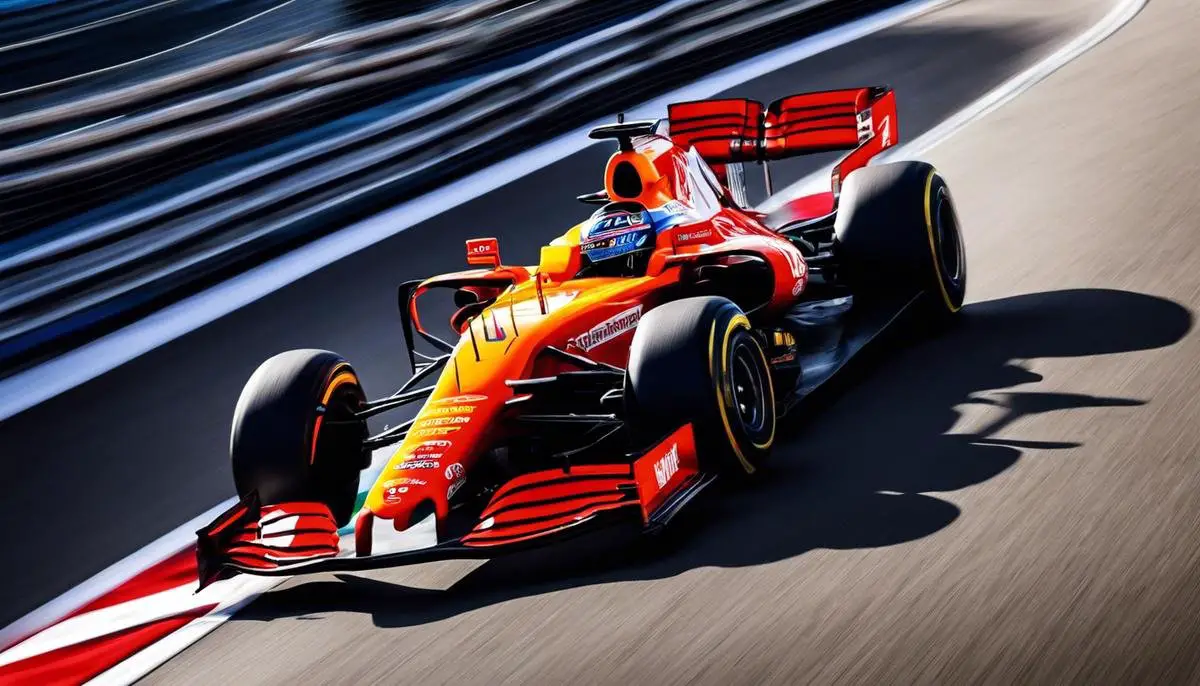
Speed Regulation in F1
Tech's Grip on the Speeds of F1: The Regulation of Racing's Pinnacle
In the world of motorsport, Formula 1 represents the zenith of speed, precision, and technological innovation. Tech plays an instrumental role in speed regulation, ensuring a competitive yet safe environment for drivers, teams, and spectators. Let's dive beneath the carbon fiber skin of F1 and uncover the lesser-discussed, yet critical, technological marvels that keep these high-octane speedsters in check.
Delving into the domain of speed regulation, the Drag Reduction System (DRS) is a pivotal technological innovation. It allows a trailing car an aerodynamic advantage, aiding in overtaking maneuvers. DRS does this by reducing drag on a designated part of the car, the rear wing, which increases speed. However, it's not a free-for-all—it's meticulously governed by regulations that dictate its usage to promote fair play and competition.
Powering F1 cars are not just the drivers but a sophisticated Electronic Control Unit (ECU). The ECU is essentially the car's brain, capable of making real-time decisions faster than any human. It's programmed to adhere to FIA-imposed rev limits and fuel flow restrictions, consequently influencing the car's top speed and acceleration. Tightening these regulations ensures the playing field is even and no single team gains an overpowering speed advantage.
The cutting edge of technological stewardship is the Virtual Safety Car (VSC) system. Initiated during hazardous situations, the VSC ensures all cars on track slow down to a pre-determined speed, without the physical presence of a safety car. This innovation leverages high-speed data processing to maintain gaps between cars, avoiding the full-speed racing that could exacerbate on-track incidents.
Technology also dictates speed through the mandated use of standardized gearboxes and components. This standardization ensures that reliability becomes a common denominator, and cars don't simply out-speed one another due to a 'superior gearbox'. The predetermined number of gearboxes allowed per season also adds a layer of strategy, further regulating the race pace.
Furthermore, F1's refueling ban, a rule enforced since 2010, places greater emphasis on fuel strategy and car weight management. Without the option of mid-race refueling, tech advancements in fuel efficiency and energy recovery have become paramount. Teams must now strategically allocate fuel loads for the race, which directly influences the car's weight, and thereby, its speed.
Lastly, the biometric gloves, introduced in recent years, offer a real-time health monitoring system. While not directly involved in speed regulation, this technology enhances driver safety—an area that governs how fast a car can ultimately be pushed on the track. Drivers' vital signs are monitored, promoting prompt medical response in case of incidents, and ensuring safety measures evolve at the same pace as the cars' speeds.
As technology gallops forward in the fastest motorsport in the world, the subtle interplay between innovation and regulation becomes evident. Tech in F1 is not just about pushing boundaries; it's about defining and refining them for the sake of competition, sustainability, and safety. F1 speed regulation is a tapestry woven by high-tech threads, ensuring that as the cars surge forward, control, and regulation stride along in lockstep.
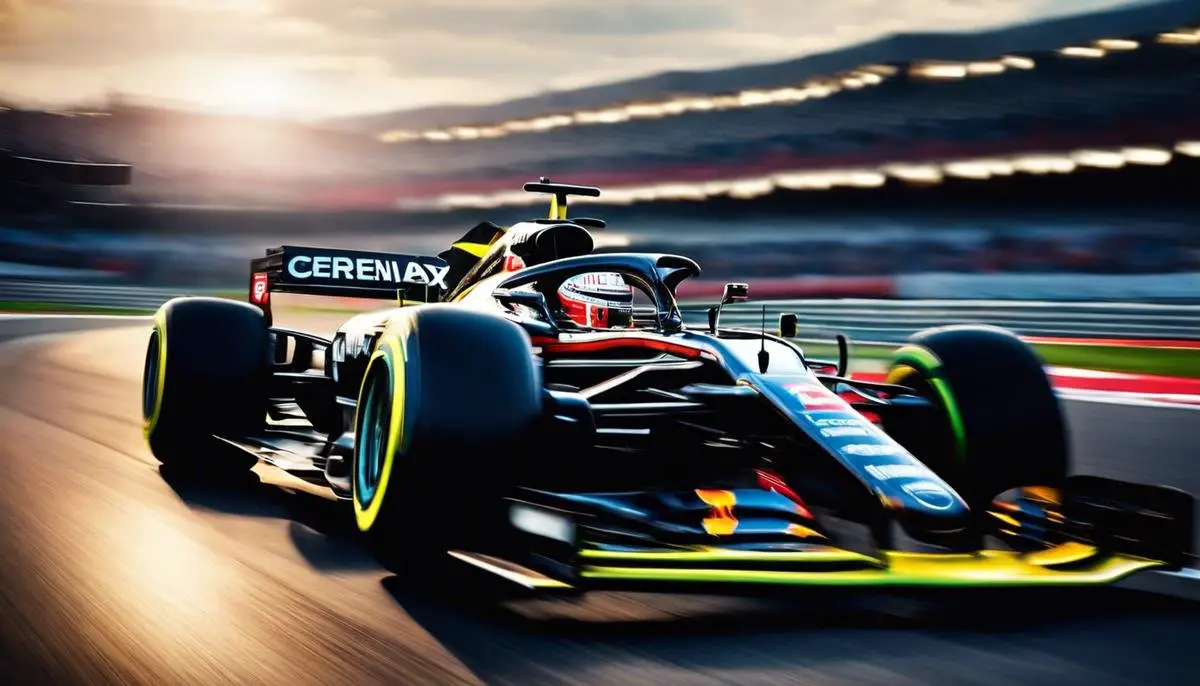
Technology Evolution in F1
The relentless pursuit of speed in Formula 1 has led to significant technological advancements in the sport. The introduction of the Drag Reduction System (DRS) has revolutionized race strategies, enabling drivers to adjust their rear wing angle on the fly, reducing drag, and facilitating overtaking maneuvers—a clear example of technology working to improve not only speed but also the spectator experience.
Under the hood—or in this case, beneath the sculpted carbon fiber chassis—the Electronic Control Unit (ECU) is the unsung hero, a testament to the sport's high-tech trajectory. Managing everything from fuel delivery to energy recovery, the ECU ensures optimal performance in these highly tuned machines. It's the conductor of the symphony of hybrid engines, turbochargers, and kinetic energy recovery systems, seamlessly orchestrating complex operations to shave milliseconds off lap times.
The introduction of the Virtual Safety Car (VSC) system showcases how tech improves race safety without unduly affecting the competition. This innovation allows for better control of race pace when hazards appear, simultaneously enhancing safety and maintaining the integrity of the race. This move ensured races are no longer neutralized by lengthy safety car periods, keeping the focus on speed and driver skill.
A nod to standardization, mandatory gearboxes and components across teams highlight how technology has managed to improve competition by leveling the playing field. This regulation not only reduces costs but encourages optimal performance within defined parameters, pushing engineers and drivers to extract every last ounce of speed from the fixed setup.
The refueling ban, paired with meticulous fuel strategy, has shifted focus to efficiency and strategic planning. Teams now leverage advanced simulations to predict fuel needs and adjust race tactics, emphasizing the strategic mind-game that Formula 1 has become.
Lastly, driver safety continues to be at the forefront with high-tech advancements such as biometric gloves. These tools monitor drivers' vitals, providing real-time data that can be critical during accidents. With each tech leap, F1 reaffirms its commitment to pushing the boundaries of innovation while ensuring the heartbeat of the sport—its drivers—remain protected.
In conclusion, tech evolution has been pivotal in accelerating F1 speeds and enhancing the sport's safety, spectacle, and strategy. F1's continued embrace of technology guarantees its status as a pinnacle of motorsport innovation, where every microseconds counts and every innovation furthers the blur of speed.
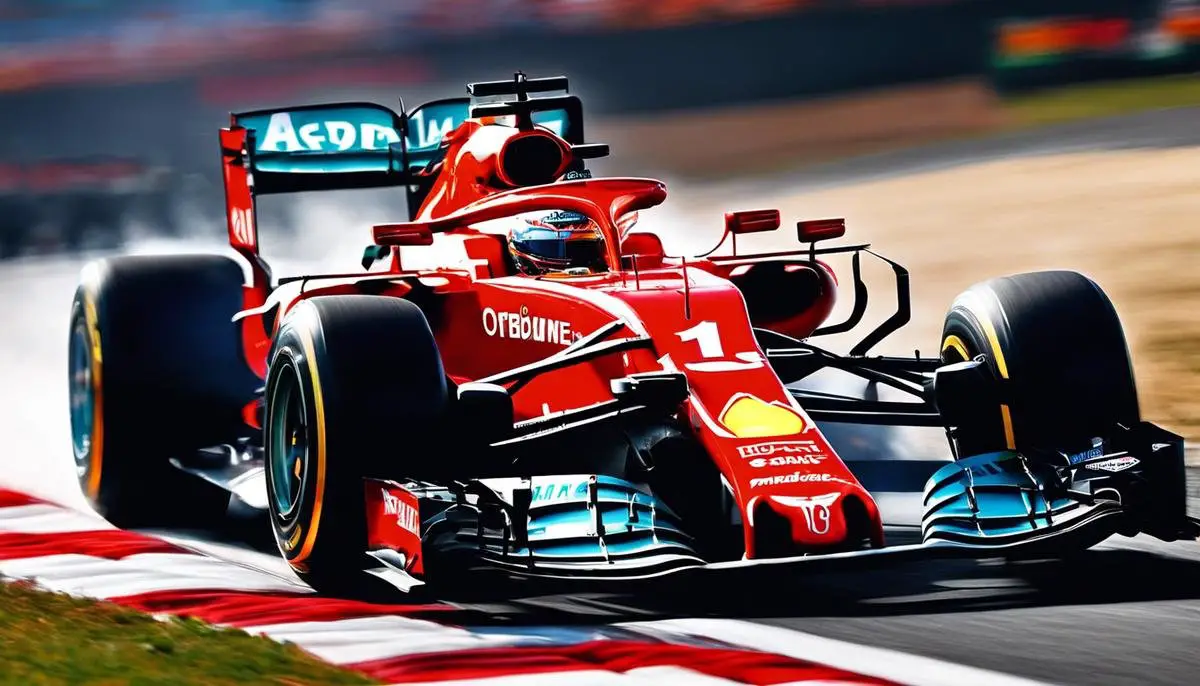
Impact of F1 Speed on Drivers
The High-Velocity Challenge: How F1 Speed Impacts Drivers Physiologically and Mentally
From a spectator's view, Formula 1 is the epitome of speed, precision, and high-octane competition. Observing the seamless synergy of man and machine hurtling down the racetrack is nothing short of awe-inspiring. But what effects does this relentless pursuit of velocity have on the drivers themselves?
Firstly, consider the raw speed. F1 cars are engineered to exceed 200 mph with ease. The upshot? Immense G-forces on a driver's body, especially during tight cornering, acceleration, and hair-raising braking events. The human body is not designed to sustain such forces, therefore F1 drivers undergo rigorous physical training to strengthen their neck and core muscles, vital for withstanding forces exceeding 5G during intense moments. It's not unusual to see drivers' necks lean significantly during hard turns — a testament to the gravitational pull they're opposing.
Moreover, high speeds mean that every split-second decision carries heightened risk. The mental capabilities of F1 drivers are, thus, pushed to their limits, much like top-tier military jet pilots. Cognitive sharpness and the ability to process information rapidly are non-negotiable traits for these elite athletes. Their brains adapt to make complex decisions at breakneck speeds, often based on the feedback received from the car and their team over the communication systems.
Additionally, reactions times are put to the test at higher speeds. With merely a fraction of a second to react to changes on the track, the sheer velocity at which these cars travel can be the difference between podium glory and a high-speed accident. This is where technology aids with features like the VSC to incrementally lower speed and allow for safer conditions when hazards materialise.
Hyperawareness is another cognitive effect of high speeds in F1. Drivers have to maintain an extensive awareness of their surroundings, opponents' positions, tire conditions, and car performance, all while navigating at speeds where every minuscule error is amplified. It's a high-risk, high-reward scenario demanding an almost superhuman level of focus.
Physiologically, high speeds can cause extreme fatigue. Despite highly specialized training, the physical toll of managing a heavyweight F1 car at top speeds is significant. Fatigue can lead to lapses in concentration, shrinking the gap between success and disaster. Hence, endurance training and cardiovascular conditioning are indispensable parts of an F1 driver's fitness regimen.
Lastly, consider the sensory impact. The noise inside the cockpit, combined with intense vibrations at high speeds, can be overpowering. Therefore, drivers need to possess extraordinary sensory acuity to discern crucial sounds — from the engine's pitch signaling optimal gear shift moments to the slightest scrape along the tarmac denoting potential mechanical trouble.
Automations and technological advancements, such as ECU-managed systems and DRS, assist in managing these high-speed effects, but they can only complement, not replace, the innate prowess and resilience of the driver. At the end of the day, it is the driver's ability to withstand and leverage the effects of speed that makes Formula 1 the pinnacle of auto racing.
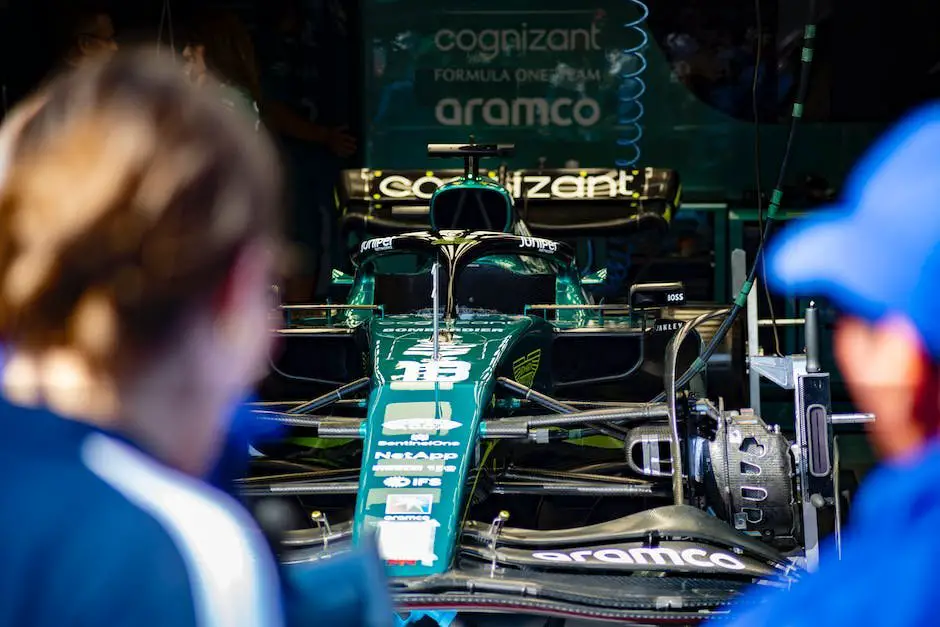
Formula 1, a sport that embodies the zenith of motor racing innovation, continues to map the uncharted territories of speed, subjecting both car and driver to the thrilling dance of physics and fine-tuned performance. The perpetual quest for speed, juxtaposed with the unyielding parameters of safety and regulation, carves a path of continuous evolution that molds not just the future of these high-octane gladiators, but also the very essence of motorsport. The orchestration of technological advancement and athletic prowess within the cauldron of F1 commands an unwavering respect for both the machines and the mortals that harness their tremendous power. As we witness the prowess that defines the spirit of Formula 1, we are reminded of the relentless march of progress and the indomitable human spirit that drives it ever forward.
Image Source: https://writio.com/



